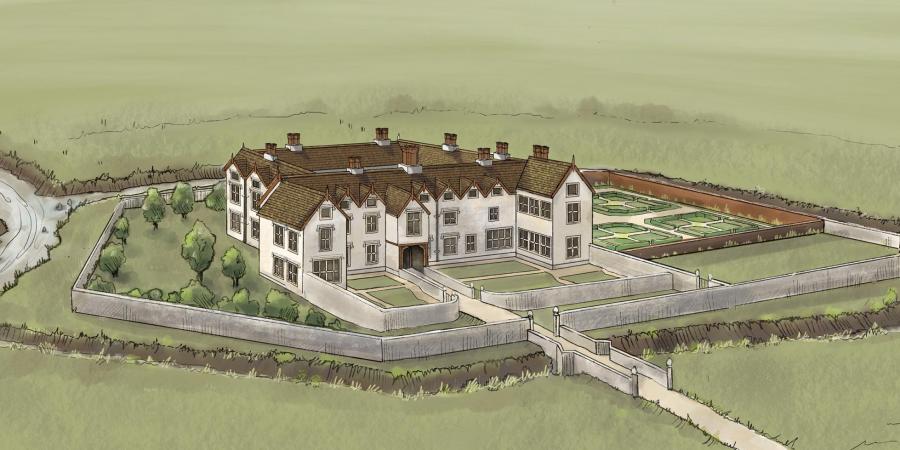Elizabethan Manor
Nestled in a bend in the River Cole, the remains of an octagonal moat can still be seen. The remnants of the Elizabethan manor it once protected are slowly being revealed.
Alongside a sandstone wall, clay pads are placed at intervals to support wooden beams, forming the lower levels of the manor and possibly the earliest phase of Coleshill Hall. This part of the manor is thought to be the start of Hall’s life as a medieval manor complex. Elsewhere, later brick walls show the sprawling expansion of the manor into the 15th, 16th century and beyond.
Echoes of the once grand Elizabethan ornamental gardens have been found. Gravel paths would have formed ordered walkways around square beds planted with medicinal herbs, fragrant flowers and practical vegetables.
The surrounding moat is more than 1.8 meters deep and shows that part of the landscape was artificially raised. At the bottom of the moat a wooden stake with marks from a chain or strap was found.

19th century artefacts
Fleur de lys
A possible harness fitting with a fleur-de-lys pattern visible on the raised central 'knop.' On the outer decorated rim, there is a single hole made for a rivet. Made from copper alloy, this possible harness fitting is from the 19th Century and would have probably been found on the harness components for a horse, on the collar or bearing reigns.
Chinese style dragon?
This decorative piece of a furniture fitting has two loops so is likely to have been attached to something at both ends. It is made from copper alloy and is probably from the 19th century.
